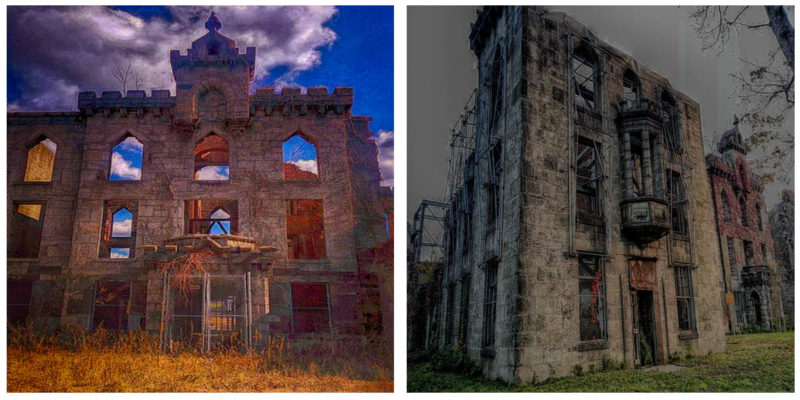The impressive gothic revival style Smallpox Hospital built on the southernmost tip of what was then Blackwell Island, New York City, was often referred to as Renwick Smallpox Hospital after the architect and designer James Renwick, Jr.
Victims of the illness were treated here up until it was converted in 1886 into the Home for the Nurses of the Maternity and Charity Hospital Training School. The ruins, reportedly haunted by the many souls who died here, can still be viewed by intrepid visitors to the island.
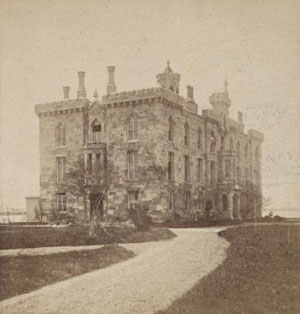
The original hospital was built out of granite quarried from the very island on which it stood. It had 100 beds in its arsenal when it was first opened in 1856. Management was transferred from New York City governance to the Sisters of Charity of New York in 1875, and the new name of Riverside was chosen for the increasingly popular hospital.
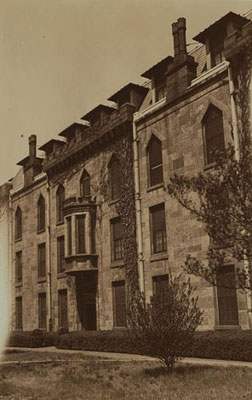
Even though the smallpox vaccine was widely available and great strides were taken to innoculate the population, the disease was still rife in New York in the mid-1800’s. The decision was made to build the first dedicated smallpox hospital so that victims could be quarantined in order to stop the spread of the illness.
So this isolated island in the East River, later renamed Roosevelt Island in 1973, was the perfect location. The hospital had to be able to accommodate all, and so besides the private rooms located on the two upper floors, there was also a charity ward intended for poor residents.
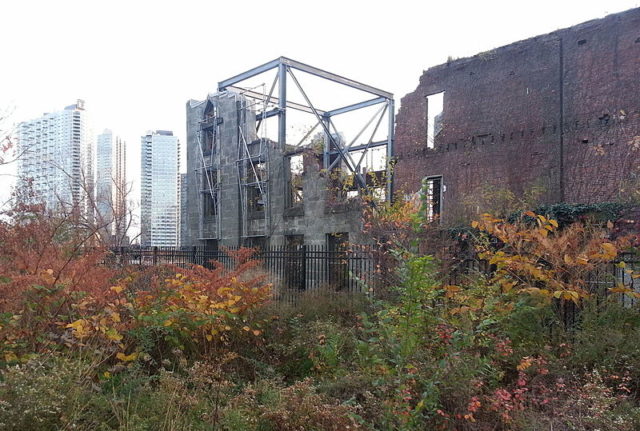
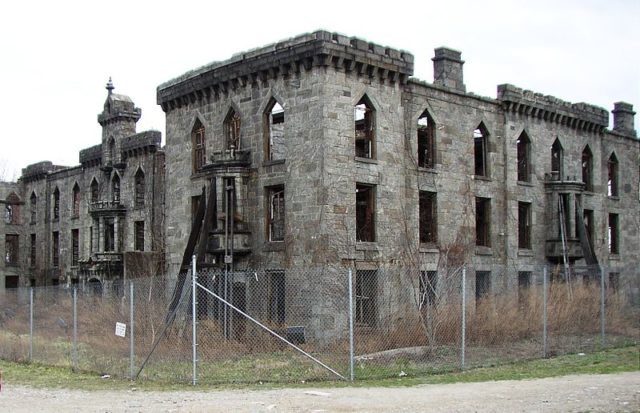
As time went on, the hospital was closed and the interior stripped and refurbished as a nursing school. Two new wings were added to the main building during it’s redevelopment, the architectural firm York & Sawyer oversaw construction of the south wing in 1903-1904 and Renwick, Aspinwall & Owen created the north wing in 1904. These would house dormitories, classrooms and training wards for resident student nurses and staff.
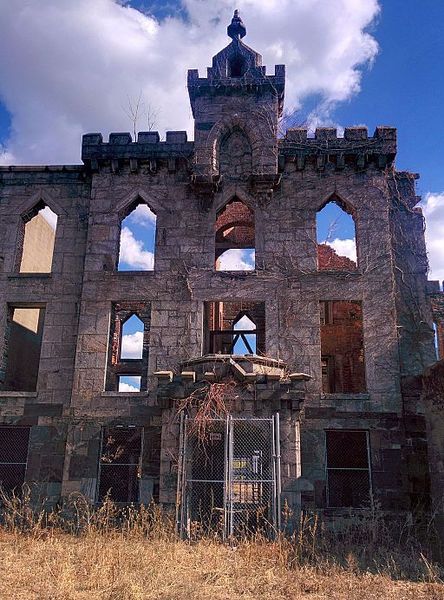
The new Home for the Nurses of the Maternity and Charity Hospital Training School became a leading nursing school, running for close to seventy years. Both the training center and Charity Hospital closed in the 1950s and their operations were reallocated to a new set of buildings in Queens.
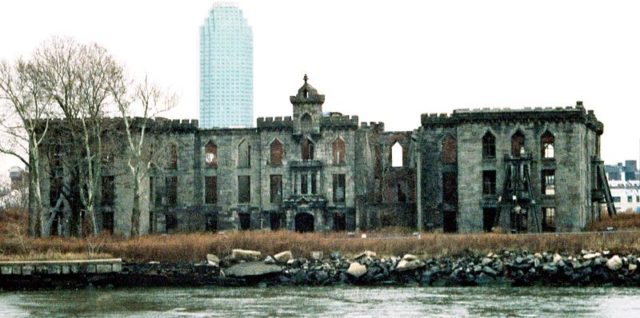
The hospital buildings were completely abandoned and time did its best to turn them into ruins. Due to its remarkable Neo-Gothic architecture, the hospital was added to the National Register of Historic Places.
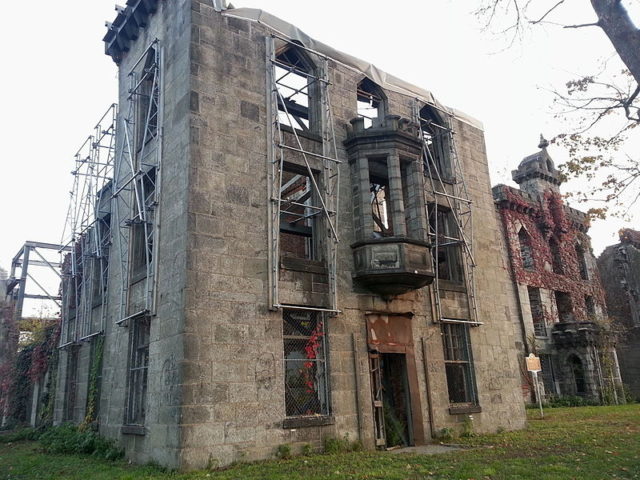
Photographs taken in 1983 by the Historic American Buildings Survey show the derelict building in a much better state than the shell which is left today. There were desperate attempts made through the years to raise funds to save the ruins starting with a project in 2005 to illuminate the façade of the hospital. Sadly, with the persistence of time, a section of the north wing collapsed in 2007.
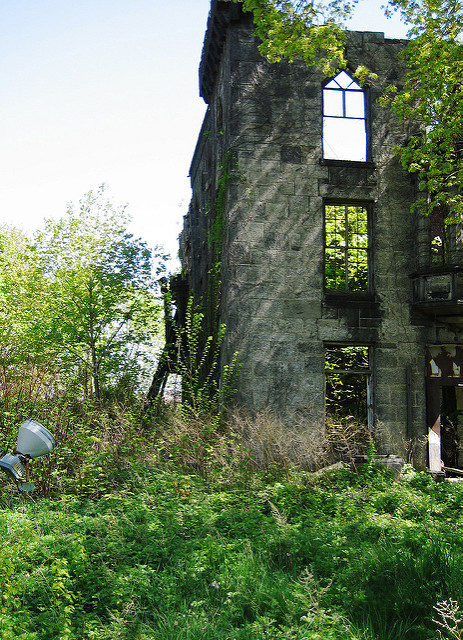
The seriousness of the situation escalated quickly, so much so that a 4.5 million dollar stabilisation project was started. In addition to structural restorations to the building, the project includes plans for a 57,000 m2 public area and a Franklin D. Roosevelt memorial.
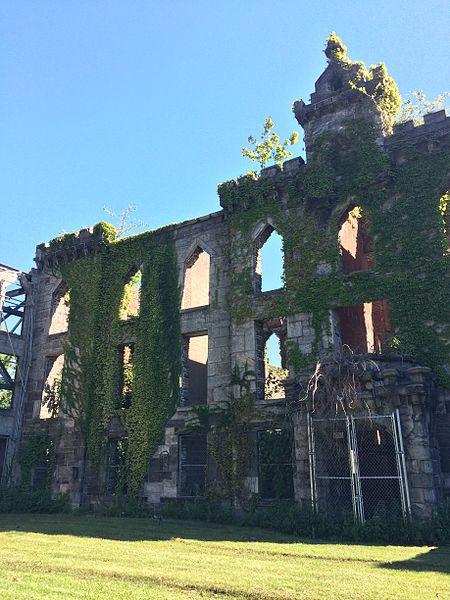
A quote from the architectural historian Paul Zucker, in his 1968 book Fascination of Decay paints the perfect picture of how much the smallpox hospital ruins are cherished: [A]n expression of an eerie romantic mood … a palpable documentation of a period in the past … something which recalls a specific concept of architectural space and proportion.
